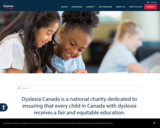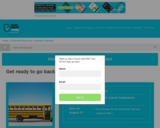
An innovative approach to looking at your own professional development or learning. There are some great ideas in here!
- Subject:
- Education
- Material Type:
- Primary Source
- Author:
- John Spencer
- Date Added:
- 06/09/2020

An innovative approach to looking at your own professional development or learning. There are some great ideas in here!

Some students misbehave because they are trying to attract teacher attention. Surprisingly, many students who value adult attention don't really care if it is positive (praise) or negative attention (reprimands)--they just want attention!
Unfortunately, instructors with students who thrive on teacher attention can easily fall into a 'reprimand trap.' The scenario might unfold much like this: First, the student misbehaves. Then the teacher approaches the student and reprimands him or her for misbehaving. Because the student finds the negative teacher attention to be reinforcing, he or she continues to misbehave-and the teacher naturally responds by reprimanding the student more often! An escalating, predictable cycle is established, with the student repeatedly acting-out and teacher reprimanding him or her.
Teachers can break out of this cycle, though, by using 'random positive attention' with students. Essentially, the instructor starts to ignore student attention-seeking behaviors, while at the same time 'randomly' giving the student positive attention. That is, the student receives regular positive teacher attention but at times unconnected to misbehavior. So the student still gets the adult attention that he or she craves. More importantly, the link between student misbehavior and resulting negative teacher attention is broken.

Motivating a reluctant student to complete schoolwork is not easy. In a typical classroom, students can choose from a number of sources of potential reinforcement (Billington & DiTommaso, 2003)--and academic tasks often take a back seat to competing behaviors such as talking with peers. One way that teachers can increase the attractiveness of schoolwork is by structuring lessons or assignments around topics or activities of high interest to the student (Miller et al., 2003).In fact, with planning, the teacher can set up a 'trap' that uses motivating elements to capture a student's attention to complete academic tasks (Alber & Heward, 1996). Here is a 6-step blue-print for building an academic 'motivation trap' (adapted from Alber & Heward, 1996).

Students can sometimes have emotional outbursts in school settings. This fact will not surprise many teachers, who have had repeated experience in responding to serious classroom episodes of student agitation. Such outbursts can be attributed in part to the relatively high incidence of mental health issues among children and youth. It is estimated, for example, that at least one in five students in American schools will experience a mental health disorder by adolescence (U.S. Department of Health and Human Services, 1999). But even students not identified as having behavioral or emotional disorders may occasionally have episodes of agitation triggered by situational factors such as peer bullying, frustration over poor academic performance, stressful family relationships, or perceived mistreatment by educators.

This 14-minute video for educators introduces working with Common Core standards for English and math. How will teaching to the Common Core affect teaching practice in the classroom? Teachers and Principals discuss the opportunities Common Core offers to their students and to their own focus and teaching practice.

This 14-minute video lesson for high school educators introduces working with Common Core Standards. How will teaching to the Common Core affect teaching practice in the classroom? How can teachers help students learn to apply math and think about problem solving outside the math classroom? What does an emphasis on “depth” look like in practice? How can teachers make adapting to the Common Core a reflection point in their own practice? Teachers and principals discuss the opportunities Common Core offers for their students and for their own focus and teaching practice.

This 14-minute video lesson for middle school educators introduces working with Common Core State Standards. How will teaching to the Common Core affect teaching practice in the classroom? See how Common Core has affected teaching and learning at two pilot schools where they have already been adapted. Does the dialogue in the pilot school math classroom sound like your classroom now? What has the culture shift been like for teachers and students? How will the shift in emphasis on non-fiction reading and expository and persuasive writing benefit students? Teachers and principals discuss the opportunities Common Core offers for their students and for their own focus and teaching practice.

This 14-minute video introduces the key features and differences of the new Common Core State standards for math. It looks at the purpose of the standards for mathematical practice and how they should be integrated with content. It looks at how teaching fewer topics in each grade will change educator planning. And it discusses how the new standards can help close the achievement gap.

This document from Yukon education examines Communicating Student Learning Resource and Professional Learning Tool; the expectations for Yukon
schools on assessment, evaluation and communication of student learning.
Access this link by copying it and pasting it into a web browser to download the document and access the appendices http://lss.yukonschools.ca/communicating-student-learning-resource-and-professional-development-tool.html

This self directed PD consists of the following learning modules:
Developing ACL Pre-Assessment
Overview: What is an Assessment Capable Learner?
Part 1: Where Am I Going?
Part 2: Where Am I Now?
Part 3: How Can I Close the Gap?
Developing ACL Post-Assessment
Closing and Follow-Up: Developing ACL
Content (including video), reflection questions, lesson outcomes, essential questions are included.

he teacher's most important objective when faced with a defiant or non-compliant student is to remain outwardly calm. Educators who react to defiant behavior by becoming visibly angry, raising their voices, or attempting to intimidate the student may actually succeed only in making the student's oppositional behavior worse! While the strategies listed here may calm an oppositional student, their main purpose is to help the teacher to keep his or her cool. Remember: any conflict requires at least two people. A power struggle can be avoided if the instructor does not choose to take part in that struggle.

Learn the basics, find resources, get connected, get involved and more!
Resources include: tools, technology, tutors, education plans, financial assistance, online courses, webinars, videos and much more!
Dyslexia Canada is a national charity dedicated to ensuring that every child in Canada with dyslexia receives a fair and equitable education.

As classroom managers, teachers regularly use commands to direct students to start and stop activities. Instructors find commands to be a crucial tool for classroom management, serving as instructional signals that help students to conform to the teacher's expectations for appropriate behaviors.

One of the greatest frustrations mentioned by many teachers is that their students are often not motivated to learn. Teachers quickly come to recognize the warning signs of poor motivation in their classroom: students put little effort into homework and classwork assignments, slump in their seats and fail to participate in class discussion, or even become confrontational toward the teacher when asked about an overdue assignment. One common method for building motivation is to tie student academic performance and classroom participation to specific rewards or privileges. Critics of reward systems note, however, that they can be expensive and cumbersome to administer and may lead the student to engage in academics only when there is an outside 'payoff.' While there is no magic formula for motivating students, the creative teacher can sometimes encourage student investment in learning in ways that do not require use of formal reward systems.

This resource, produced by the National Center on Parent, Family, and Community Engagement (co-authored by HFRP’s Christine Patton and M. Elena Lopez), discusses the importance of families’ support for their children’s learning and development as children transition to new environments. The resource positions the transition to kindergarten as a pivotal point for establishing the kinds of practices that can help sustain gains children have made in their early learning settings, and offers examples of successful program practices that Head Start and Early Head Start staff can use to help children and families with this transition.

Teachers can feel overwhelmed when faced with students who are unmotivated to learn. The task becomes less daunting, though, when teachers realize that they can boost student motivation in five important ways: by (1) making positive changes to the learning environment, (2) fostering a sense of community in the classroom, (3) enhancing the interest of classroom activities, (4) responding to individual learning challenges, and (5) building in additional outcomes/pay-offs for learning. Here are some ideas:

The significance of relationships between the parents and teachers of preschool and kindergarten children is well established. Teachers and schools are presumed to be responsible for lack of parent-teacher collaboration. Early childhood teacher education programs recognize this and offer support related to parents and families.

Please find the required PowerPoint presentation below. This workshop has been developed as part of the course Parents in Teaching and Learning (ECUR 823) at the University of Saskatchewan with professor Debbie Pushor.This workshop is meant to be personalized. Select the activities you wish to discuss, and spend as much or as little time on the concepts that speak fully to your school. As you select activities and where to put your focus think of what needs to be done as a school and as a classroom teacher before school begins, during school, and over the summer. Pick and choose the activities that best fit your school and your school’s needs.If you have any questions, feedback, or require clarification please feel free to call or email Melissa.lander@sunwestsd.ca.

Teachers and students come to school bringing a wide range of backgrounds, languages, abilities, and temperaments. Get things off to the best start by asking them to respect their differences and make the most of their similarities. By sharing information on their lives and dreams, students and teachers can build community in the classroom that will support literacy instruction throughout the school year.

The Good Behavior Game is an approach to the management of classrooms behaviors that rewards children for displaying appropriate on-task behaviors during instructional times. The class is divided into two teams and a point is given to a team for any inappropriate behavior displayed by one of its members. The team with the fewest number of points at the Game's conclusion each day wins a group reward. If both teams keep their points below a preset level, then both teams share in the reward. The program was first tested in 1969; several research articles have confirmed that the Game is an effective means of increasing the rate of on-task behaviors while reducing disruptions in the classroom (Barrish, Saunders, & Wolf, 1969; Harris & Sherman, 1973; Medland & Stachnik, 1972).
The process of introducing the Good Behavior Game into a classroom is a relatively simple procedure. There are five steps involved in putting the Game into practice.